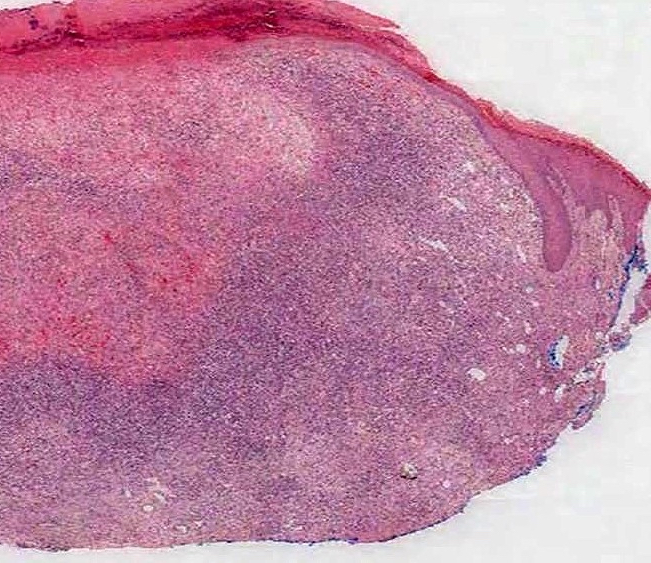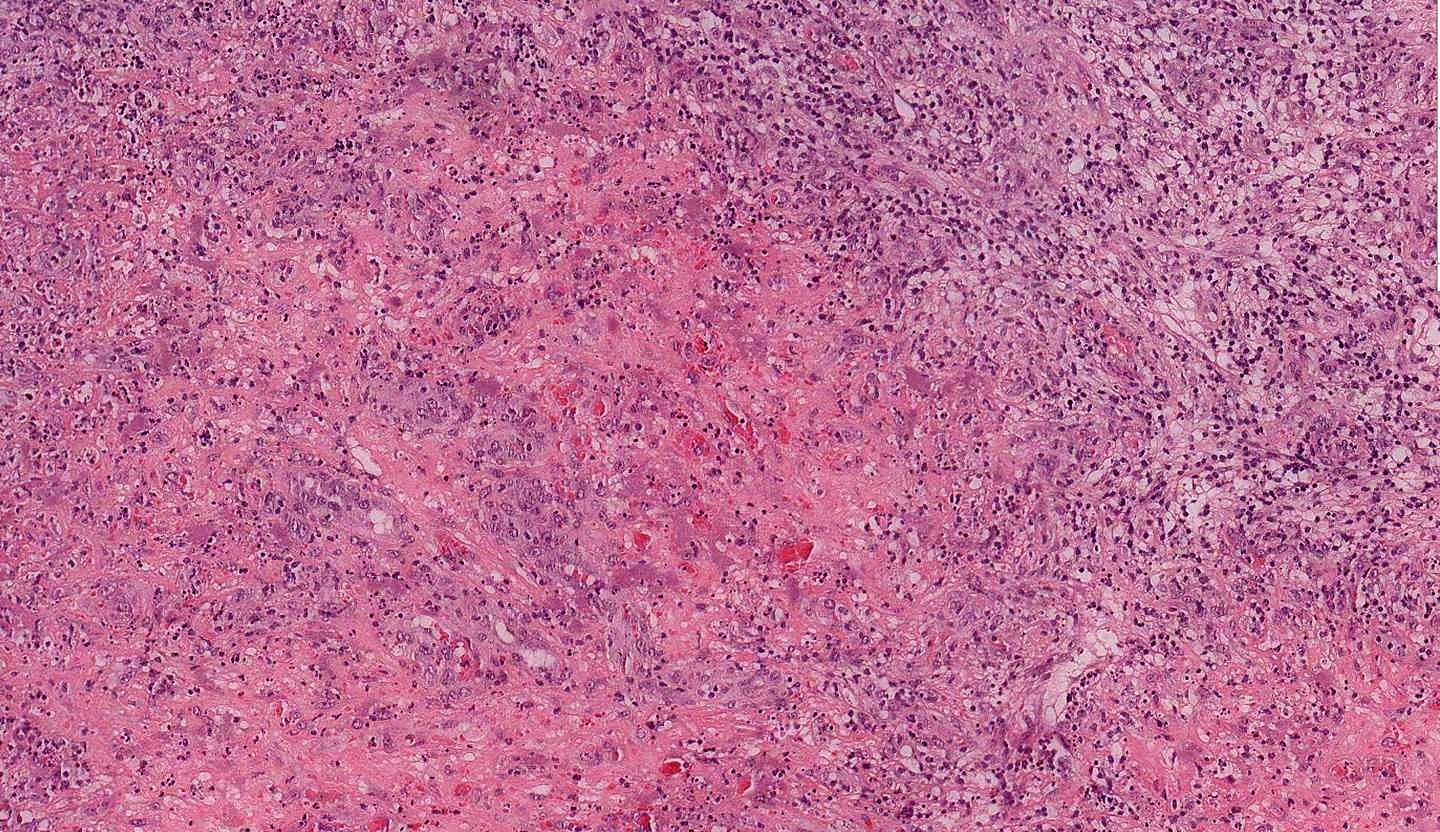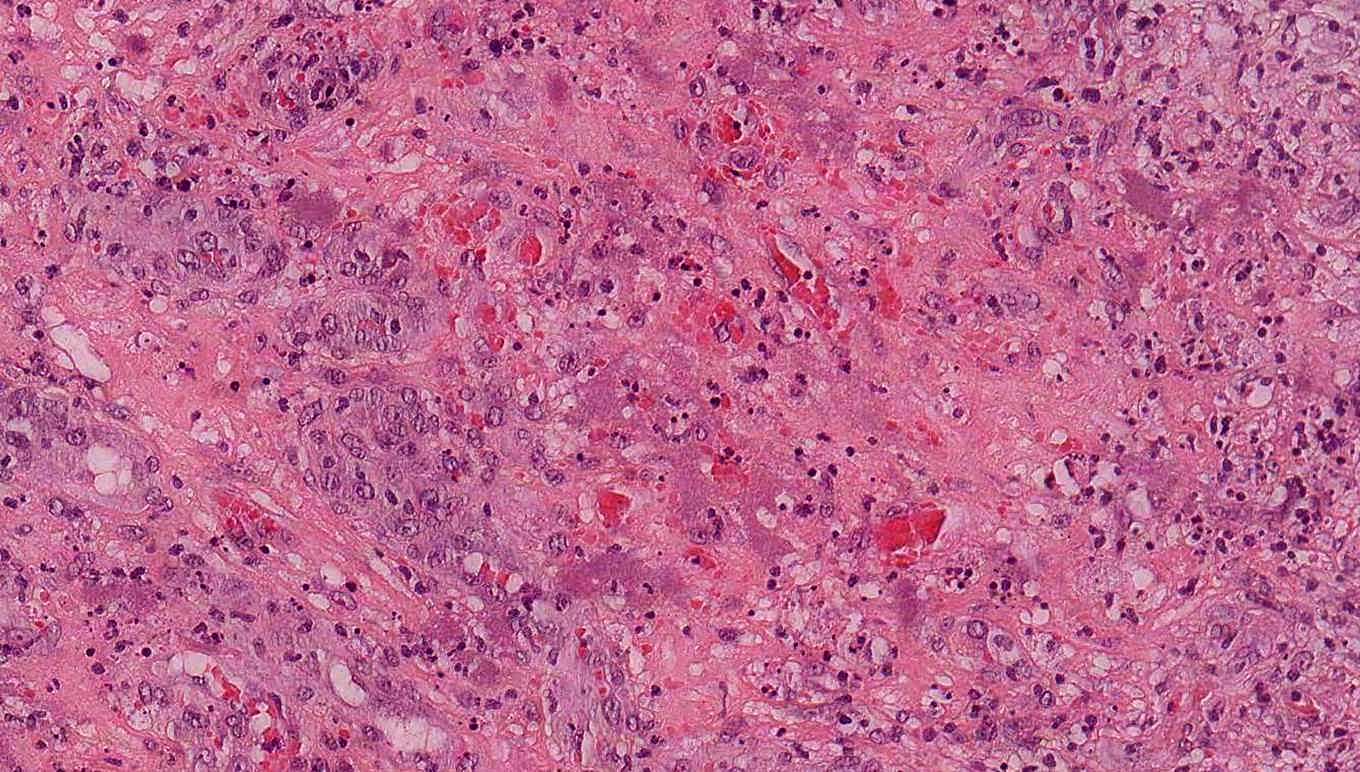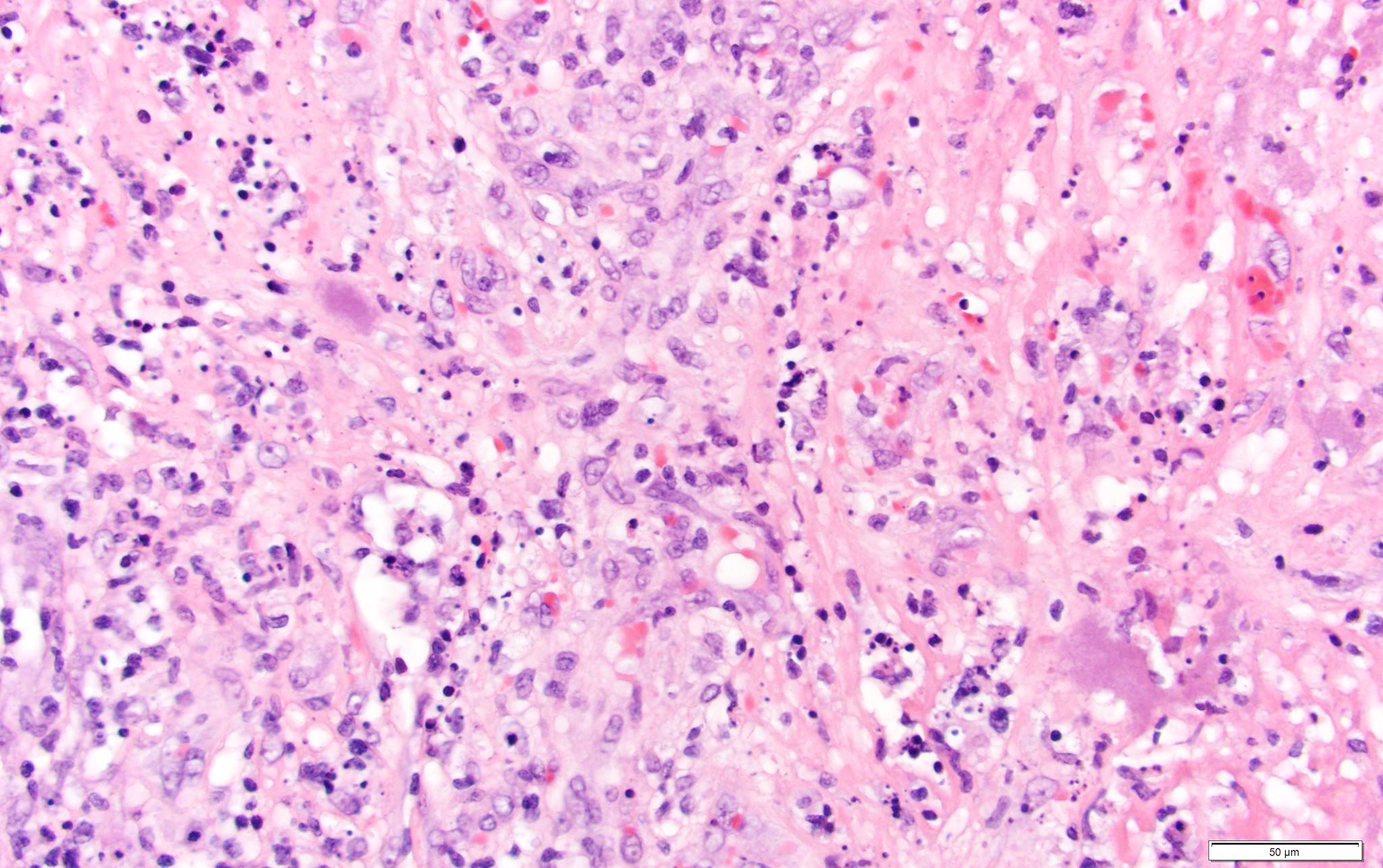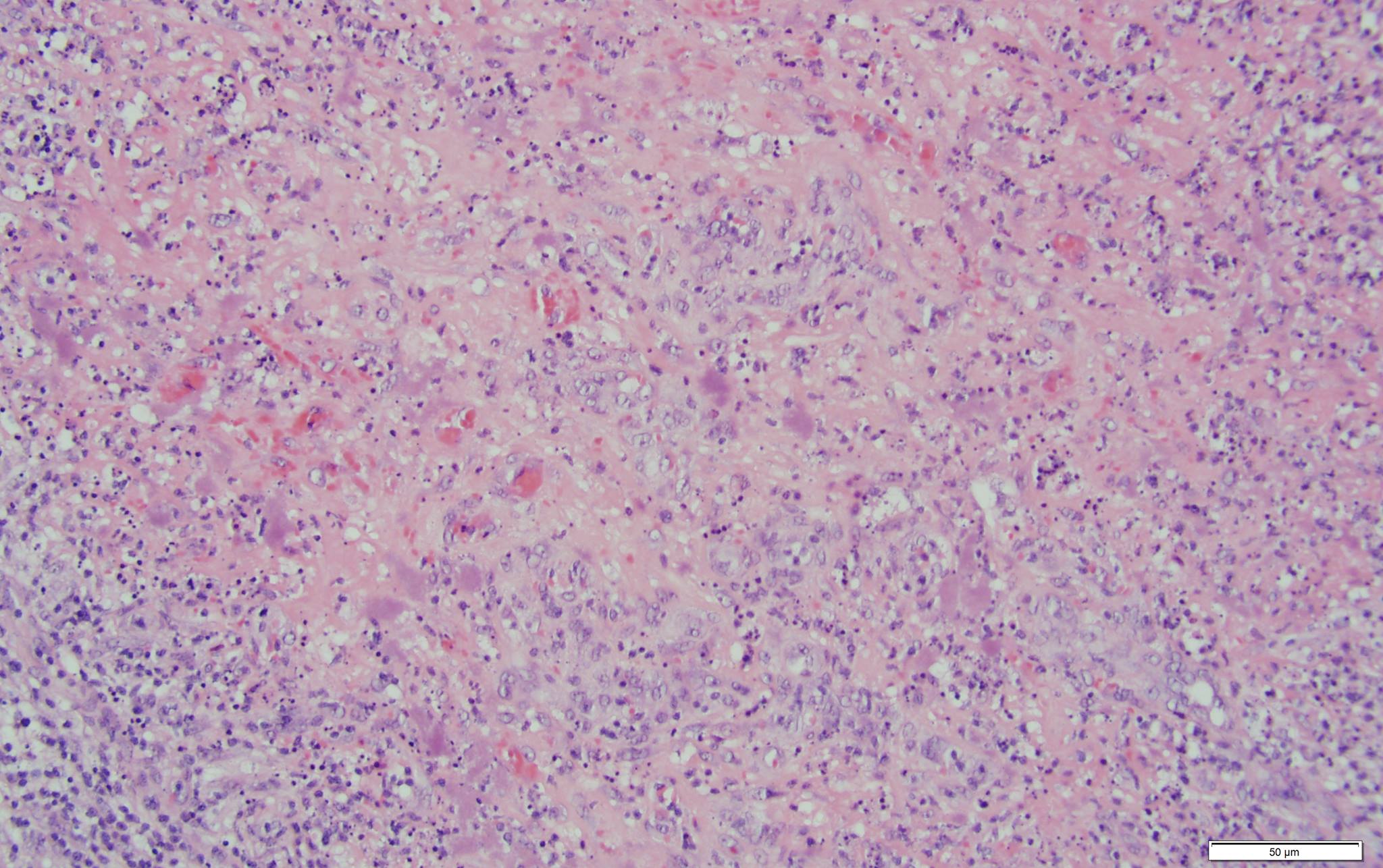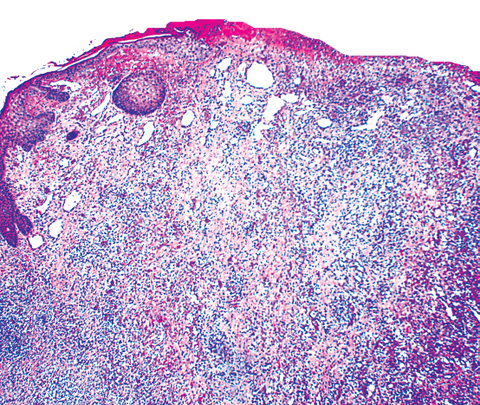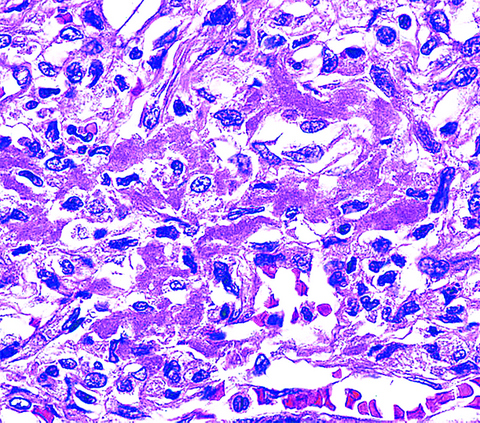Table of Contents
Definition / general | Essential features | Epidemiology | Sites | Etiology | Clinical features | Laboratory | Case reports | Treatment | Clinical images | Microscopic (histologic) description | Microscopic (histologic) images | Positive stains | Differential diagnosis | Additional referencesCite this page: Tjarks J, Shalin S. Bacillary angiomatosis. PathologyOutlines.com website. https://www.pathologyoutlines.com/topic/skintumornonmelanocyticbacillaryangiomatosis.html. Accessed September 2nd, 2025.
Definition / general
- Reactive vascular proliferation due to infection by Bartonella henselae or Bartonella quintana
- Most commonly affects immunocompromised individuals (especially those with HIV)
Essential features
- Lobular proliferation of capillaries with ectatic vessels lined by prominent endothelial cells
- Neutrophils, lymphocytes and histiocytes are frequently present
- Purplish grey bacterial colonies may be seen
Epidemiology
- May affect adults and children
- Most commonly affects immunocompromised individuals
Sites
- Can occur in any cutaneous site
- Rarely occurs in mucosa or internal organs
Etiology
- B. Henselae is acquired via cat scratch or bite in 2/3 of cases
Clinical features
- Red, smooth papules and nodules which are widely distributed
- May mimic Kaposi sarcoma and pyogenic granuloma clinically
Laboratory
- PCR and IHC may be helpful in identifying organisms
Case reports
- 36 year old man with bacillary angiomatosis presenting with facial tumor and multiple abcesses (Medicine (Baltimore) 2016;95:e4155)
- 43 year old man with bacillary angiomatosis presenting with polymorphic skin lesions (IDCases 2016;6:77)
Treatment
- Antibiotics - typically doxycycline
Clinical images
Microscopic (histologic) description
- Lobular proliferation of capillaries with ectatic vessels lined by prominent endothelial cells in edematous stroma
- Neutrophils, lymphocytes and histiocytes are frequently present
- Purplish grey bacterial colonies may be seen, especially near neutrophils
- Peripheral collarette may be seen (low power histologic image mimics pyogenic granuloma)
- Warthin-Starry special stain will highlight Bartonella organisms
Microscopic (histologic) images
Positive stains
Differential diagnosis
- Kaposi sarcoma: spindled vascular proliferation with slit-like vascular spaces, plasma cells, HHV8 positive, lacks purplish grey bacterial colonies
- Pyogenic granuloma: lobular proliferation of capillaries, but typically somewhat less inflamed (unless ulcerated) and no purplish grey bacterial colonies
Additional references






